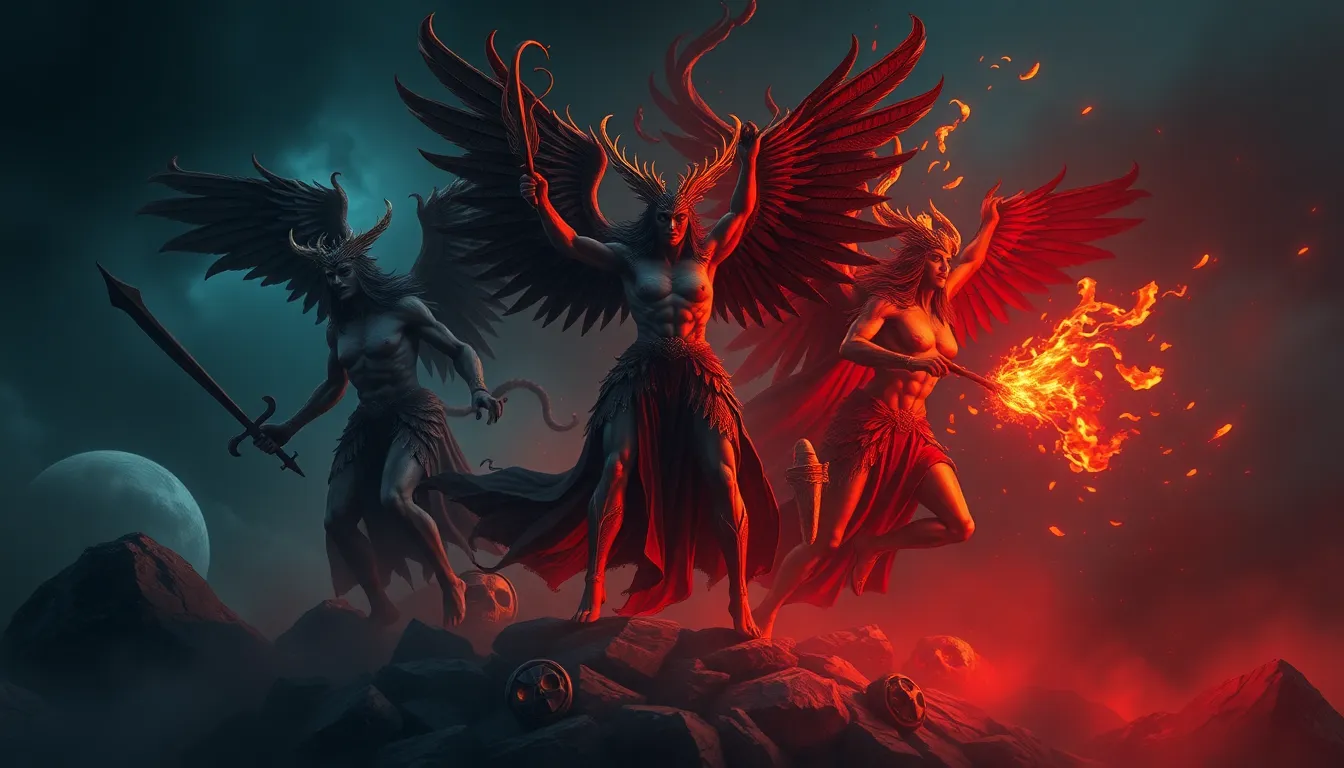The Furies: Avenging Spirits of Divine Retribution
I. Introduction to the Furies
The Furies, known in Greek mythology as the Erinyes, are fierce and powerful deities who personify vengeance and retribution. Their significance in mythology extends beyond mere punishment; they represent the moral order of the universe and the consequences of human actions. The Furies are integral to many myths and stories, often invoked in tales of betrayal, murder, and familial discord, highlighting the ancient Greeks’ understanding of justice and morality.
In Greek culture, the Furies played a crucial role in shaping the narrative around justice. They were not only feared but also respected, as they ensured that divine justice was served. Their presence in literature and drama underscores the complexities of ethical dilemmas and the consequences of one’s actions.
II. Origins and Birth of the Furies
The origins of the Furies are steeped in the tumultuous fabric of Greek mythology. According to myth, they were born from the blood of Uranus when he was castrated by his son Cronus. This act of violence unleashed a wave of chaos, and from Uranus’ blood sprang forth the Furies, symbolizing the idea that acts of violence yield further suffering and retribution.
Key deities involved in their birth include:
- Uranus: The sky god, whose blood gave rise to the Furies.
- Gaia: The Earth, often considered their mother, who bore them as a response to cosmic injustice.
- Chronos: The personification of time, whose acts led to the circumstances surrounding their birth.
The symbolism behind their creation reflects the interconnectedness of violence, chaos, and the need for retribution in the cyclical nature of life and death.
III. Characteristics and Attributes of the Furies
The Furies are often depicted as fearsome figures, embodying the terror of divine retribution. Their physical appearance varies across ancient art but commonly includes:
- Serpents entwined in their hair.
- Dark robes, symbolizing their association with death and vengeance.
- Eyes that weep blood, representing the pain and suffering they inflict on wrongdoers.
Psychologically, the Furies are characterized by their relentless pursuit of justice. They are unyielding in their mission to punish those who have committed grave offenses, particularly against family members. Their role as avengers underscores the ancient Greek belief in the sanctity of familial bonds and the dire consequences of violating them.
IV. The Furies’ Role in Greek Mythology
One of the most notable myths involving the Furies is the story of Orestes. After Orestes avenged his father’s murder by killing his mother, Clytemnestra, he was pursued by the Furies for this heinous act. This myth illustrates the complexities of justice, particularly the conflict between personal vengeance and moral law.
The Furies interacted with various gods and mortals, often serving as mediators of justice. Their encounters with Athena in the trial of Orestes marked a pivotal moment in Greek mythology, showcasing the transition from a system of personal revenge to a more structured form of justice.
V. The Furies in Literature and Drama
The Furies have been prominently featured in ancient Greek literature, most notably in Aeschylus’ trilogy, the “Oresteia.” In this series of plays, the Furies are depicted as relentless pursuers of Orestes, embodying the theme of justice and retribution. Their role evolves throughout the trilogy, culminating in their transformation into the Eumenides, or “the kindly ones,” which signifies a shift towards mercy and a more civilized form of justice.
Their influence extends beyond ancient texts, inspiring countless adaptations and interpretations in later literary works, where they serve as archetypes for vengeance and moral accountability.
VI. The Furies and Concepts of Justice
The Furies embody the tension between divine justice and human justice. In their pursuit of retribution, they highlight the ancient Greek belief that moral order must be preserved, and that wrongdoing cannot go unpunished. This raises profound questions about the nature of justice:
- What constitutes true justice?
- Can personal vengeance be justified?
- How do societal norms shape our understanding of right and wrong?
The Furies serve as symbols of moral order, reminding humanity of the consequences of their actions and the need for accountability in a just society.
VII. The Modern Legacy of the Furies
The legacy of the Furies extends into contemporary literature, film, and popular culture. They have been reinterpreted in various forms, often symbolizing the relentless pursuit of justice and the psychological aspects of revenge. Their archetype resonates in modern narratives that explore themes of female empowerment and the darker sides of human nature.
In feminist discourse, the Furies represent a reclaiming of power and agency, challenging traditional narratives of victimhood. They embody the idea that women can be both avengers and arbiters of justice, reflecting the complexities of gender dynamics in society.
VIII. Conclusion
The Furies hold an enduring significance in the exploration of morality and justice. They remind us of the intricate balance between vengeance and justice, and the consequences of our actions on both personal and societal levels. In today’s society, their relevance persists as we grapple with issues of accountability, retribution, and the quest for a moral order.
Ultimately, the Furies are a testament to the timeless nature of human struggles with ethics and justice, serving as a reminder that the pursuit of retribution must always be tempered with a sense of moral responsibility.




